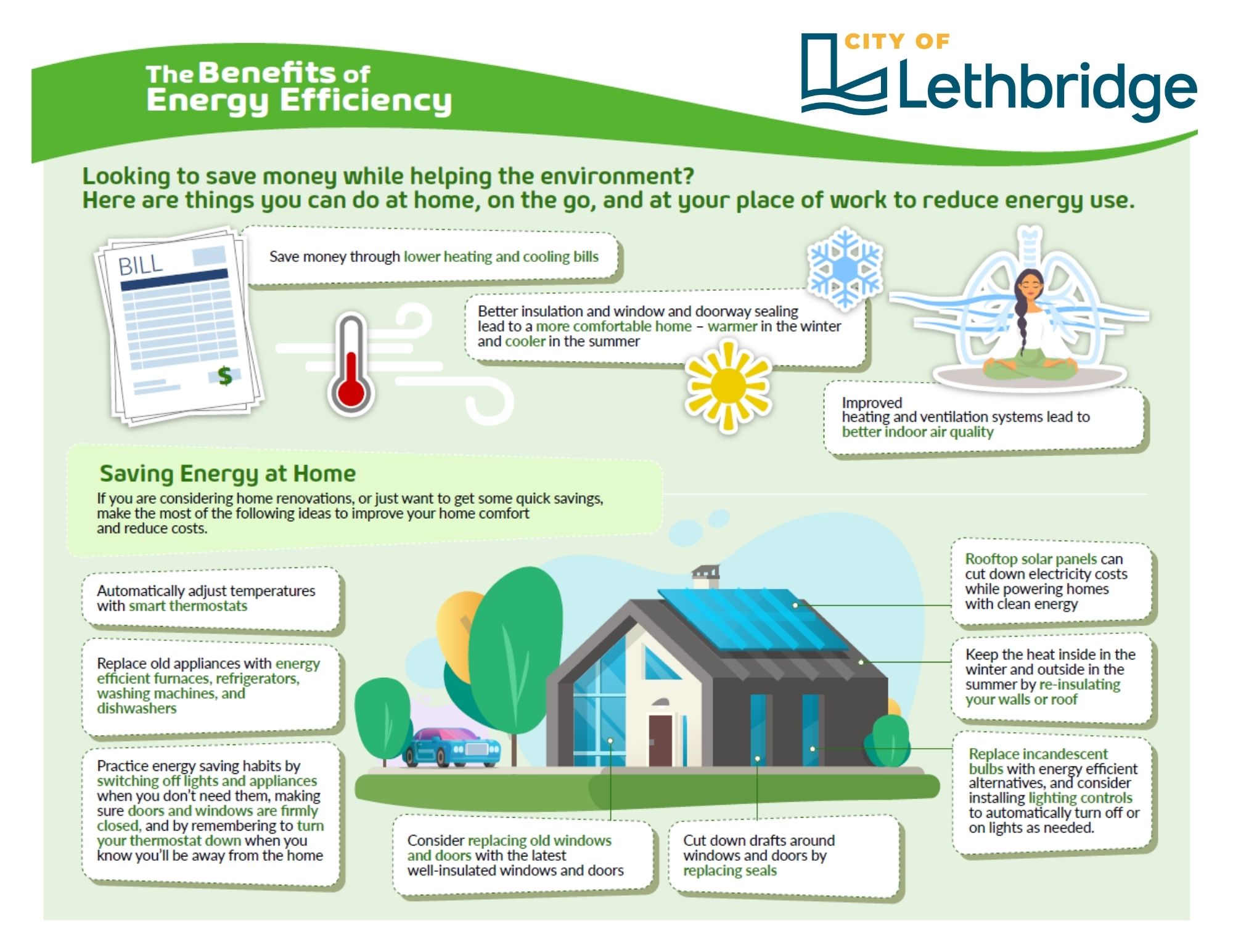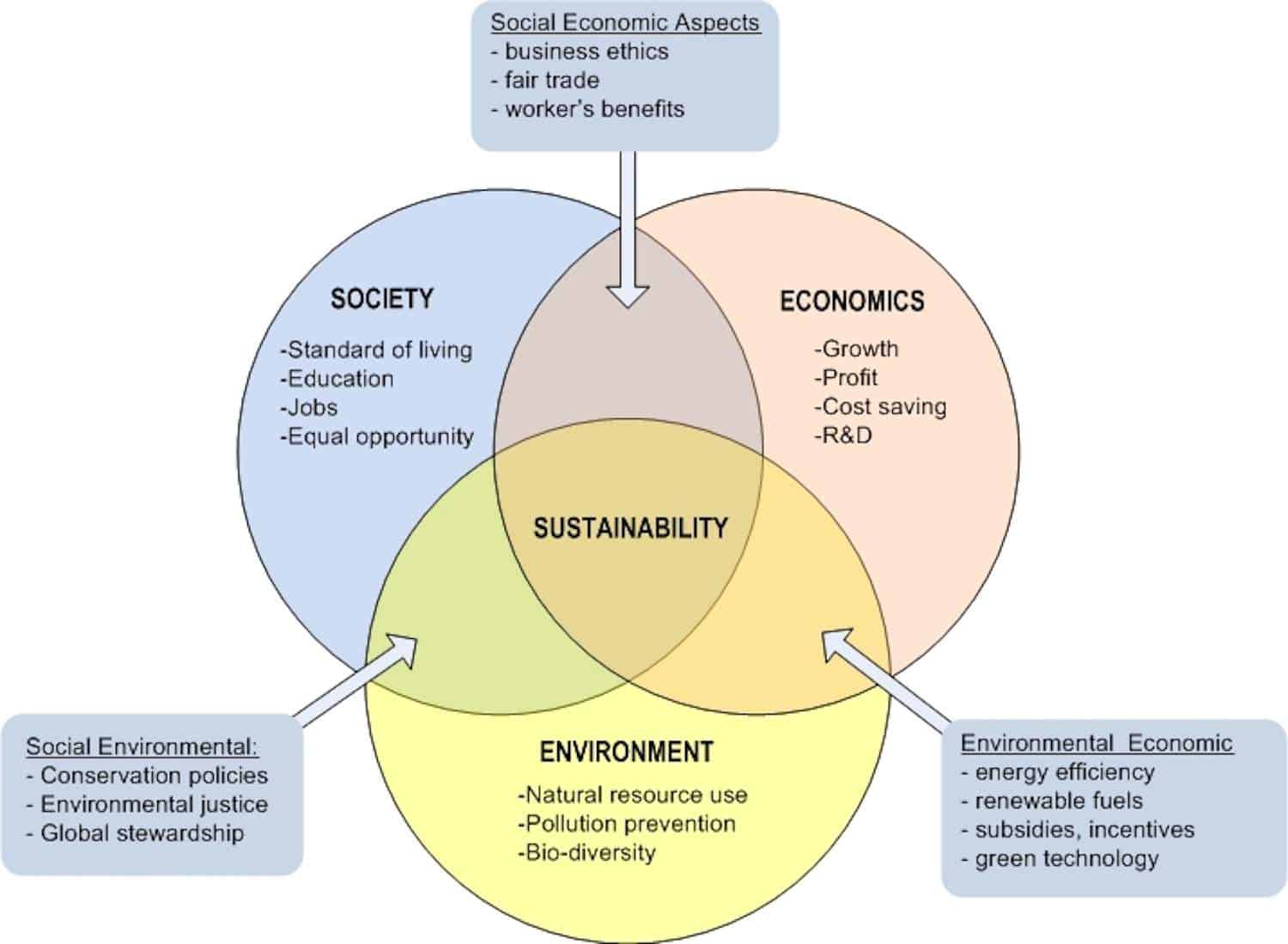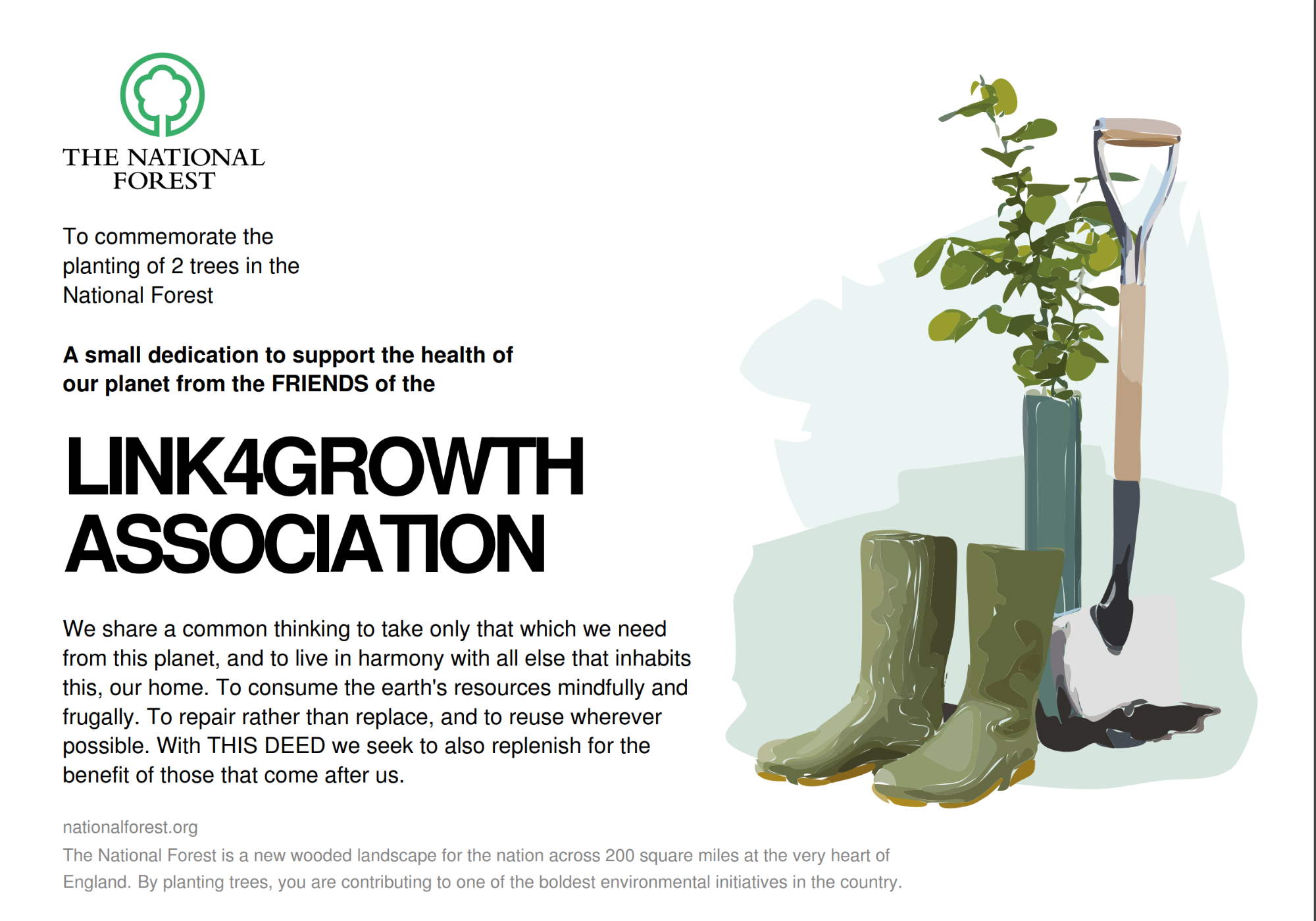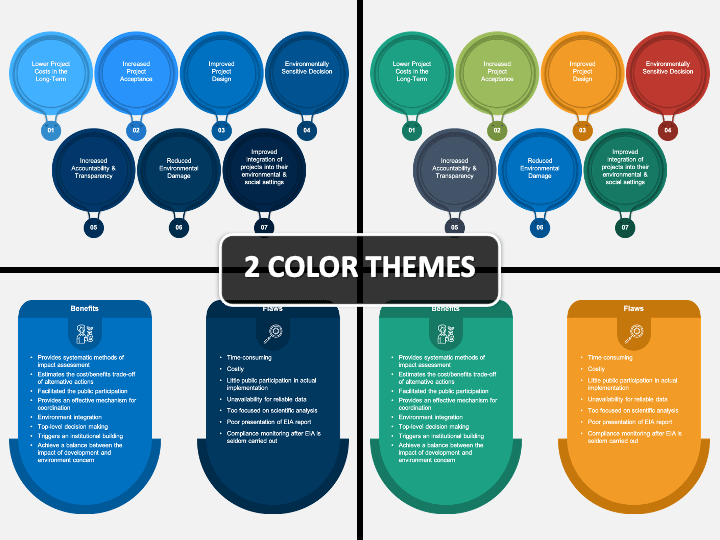Cultivating a Greener Tomorrow: Environmental Stewardship Benefits

Embracing Environmental Stewardship
Environmental stewardship is a philosophy that encourages responsible and sustainable use of natural resources, emphasizing the importance of leaving a positive impact on the environment for future generations. This article delves into the manifold benefits of embracing environmental stewardship, exploring how individuals can play a crucial role in cultivating a greener tomorrow.
Sustainable Resource Management
At the core of environmental stewardship is the idea of sustainable resource management. This involves using resources in a way that meets present needs without compromising the ability of future generations to meet their own needs. By adopting sustainable practices in energy consumption, waste reduction, and resource utilization, individuals contribute to the preservation of the environment and its resources.
Mitigating Climate Change Impact
One of the most pressing global challenges is climate change, and environmental stewardship plays a pivotal role in mitigating its impact. By reducing carbon footprints, supporting renewable energy initiatives, and advocating for eco-friendly policies, individuals contribute to a collective effort in addressing climate change. Environmental stewardship fosters a sense of responsibility towards the planet’s health and resilience.
Biodiversity Conservation Efforts
Preserving biodiversity is integral to environmental stewardship. Ecosystems thrive on diverse plant and animal species, each playing a unique role in maintaining ecological balance. Stewardship efforts include habitat conservation, reforestation projects, and initiatives to protect endangered species. By actively participating in biodiversity conservation, individuals contribute to the overall health of the planet.
Responsible Waste Management
Environmental stewardship places a strong emphasis on responsible waste management. This involves reducing waste generation, recycling materials, and minimizing the use of single-use plastics. Individuals can adopt practices such as composting, supporting recycling programs, and choosing products with minimal packaging, collectively working towards a more sustainable and waste-conscious society.
Sustainable Agriculture Practices
Agriculture is a significant contributor to environmental impact, and environmental stewardship extends to the realm of sustainable agriculture. Practices such as organic farming, agroforestry, and soil conservation contribute to soil health, reduce the use of harmful pesticides, and promote sustainable food production. Supporting local and sustainable agriculture is a tangible way individuals can engage in environmental stewardship.
Water Conservation Initiatives
Water scarcity is a growing concern globally, and environmental stewardship emphasizes the importance of water conservation. Individuals can adopt water-saving practices in their homes, invest in water-efficient appliances, and support initiatives that promote responsible water use. Through these efforts, environmental stewardship addresses the pressing issue of water sustainability.
Fostering a Culture of Sustainability
Environmental stewardship goes beyond individual actions; it involves fostering a culture of sustainability in communities and societies. This cultural shift includes promoting eco-friendly practices in schools, workplaces, and public spaces. By influencing collective behavior towards more sustainable choices, environmental stewardship becomes a shared responsibility and a societal norm.
Advocacy for Green Policies
Individuals engaged in environmental stewardship often become advocates for green policies and initiatives. This includes supporting legislation that promotes renewable energy, conservation efforts, and sustainable practices. Through active participation in advocacy, individuals amplify their impact and contribute to shaping a policy landscape that prioritizes environmental well-being.
The Environmental Stewardship Benefit
The overarching benefit of environmental stewardship is the creation of a healthier and more resilient planet. By actively participating in sustainable practices, individuals become agents of positive change, influencing the trajectory of environmental health. To explore more about the environmental stewardship benefit and practical steps to contribute, visit Environmental Stewardship Benefit for valuable resources and insights.
Conclusion: A Collective Responsibility
In conclusion, environmental stewardship is not just a choice but a collective responsibility. Each individual action, whether small or large, contributes to the broader effort of cultivating a greener tomorrow. By embracing environmental stewardship, individuals become stewards of the Earth, leaving a positive legacy for future generations.
Embracing Eco-Friendly Living for a Greener Home

Fostering Sustainability Through Green Home Living
Living a green lifestyle involves making conscious choices that prioritize the well-being of the environment. In this exploration, we delve into the principles of green home living, understanding its significance, and adopting practices that contribute to a more sustainable future.
Understanding Green Home Living
Green home living revolves around creating a living space that minimizes its impact on the environment. This encompasses various aspects, including energy consumption, resource usage, waste generation, and overall ecological footprint. The goal is to create a harmonious balance between human habitation and the preservation of the natural world.
Energy-Efficient Practices for a Greener Home
One of the cornerstones of green home living is prioritizing energy efficiency. This involves using energy-efficient appliances, incorporating smart home technologies, and exploring renewable energy sources like solar power. Implementing these practices not only reduces the ecological impact but also often leads to long-term cost savings for homeowners.
Eco-Friendly Construction and Design
The journey towards green living begins with the construction and design of the home. Sustainable materials, energy-efficient designs, and environmentally conscious construction practices contribute to a green home. From the choice of flooring materials to the orientation of the building, each decision plays a role in minimizing the environmental footprint.
Waste Reduction and Recycling Initiatives
Green home living emphasizes the importance of waste reduction and recycling. Implementing recycling initiatives, composting organic waste, and minimizing single-use plastics are integral components. By actively participating in waste reduction, homeowners contribute to the conservation of natural resources and the reduction of landfill waste.
Water Conservation Practices
Conserving water is another vital aspect of green living. Implementing water-saving fixtures, adopting drought-resistant landscaping, and being mindful of water usage contribute to sustainable water practices. These initiatives not only benefit the environment but also help homeowners save on water bills.
Green Transportation Choices
Green living extends beyond the home to transportation choices. Opting for eco-friendly modes of transportation, such as electric or hybrid vehicles, cycling, or using public transportation, reduces carbon emissions. This holistic approach to green living considers the entire lifestyle’s impact on the environment.
Creating a Healthy Indoor Environment
Green home living also prioritizes creating a healthy indoor environment. This involves using eco-friendly cleaning products, minimizing indoor pollutants, and ensuring proper ventilation. A healthy indoor environment contributes to the well-being of residents and aligns with the principles of sustainable living.
Community Engagement for Collective Impact
The impact of green home living extends beyond individual households. Engaging with the community, participating in local sustainability initiatives, and sharing knowledge with neighbors amplify the collective impact. Green communities foster a sense of shared responsibility and contribute to a more sustainable and resilient society.
Government Support and Incentives
Governments recognize the importance of promoting green living and often offer support and incentives. These can include tax credits for energy-efficient home upgrades, rebates for solar installations, and other incentives for eco-friendly practices. Staying informed about available incentives encourages homeowners to embrace green living.
Green Home Living: A Link to a Sustainable Future
In conclusion, green home living is not just a trend; it’s a crucial link to a sustainable future. By adopting eco-friendly practices, minimizing environmental impact, and promoting a conscious lifestyle, individuals contribute to a global movement towards environmental stewardship. Explore more about Green Home Living at SolarHelp.info and embark on a journey towards a greener, healthier, and more sustainable home.
Clean Air Benefits: Breathing Easier for a Healthier Tomorrow

Clean Air Benefits: Breathing Easier for a Healthier Tomorrow
The quality of the air we breathe is crucial for our well-being and the health of the planet. As we continue to grapple with environmental challenges, understanding the Clean Air Benefits becomes essential for promoting a sustainable and healthier future.
1. The Impact of Clean Air on Health
Clean air plays a pivotal role in safeguarding our health. Reduced air pollution contributes to lower rates of respiratory diseases, cardiovascular issues, and other health concerns. Breathing in fresh, clean air is vital for optimal lung function and overall well-being. Individuals in areas with cleaner air often experience improved respiratory conditions and a lower risk of health complications.
2. Environmental Benefits of Clean Air
Clean air is not only beneficial for human health but also for the environment. Reduced air pollution contributes to the preservation of ecosystems, wildlife, and plant life. Cleaner air helps maintain biodiversity and supports the delicate balance of nature. By prioritizing clean air, we are taking a significant step towards ensuring the sustainability of our planet.
3. Clean Air and Climate Change Mitigation
Addressing air quality is closely tied to efforts to combat climate change. Many air pollutants, such as greenhouse gases, contribute to global warming. By focusing on clean air initiatives, we simultaneously contribute to climate change mitigation. Sustainable practices, renewable energy sources, and energy efficiency measures play a crucial role in reducing the pollutants that affect both air quality and the climate.
4. Economic Advantages of Cleaner Air
The benefits of clean air extend beyond health and the environment; they also have economic implications. Improved air quality leads to lower healthcare costs, increased work productivity, and a healthier workforce. Investing in clean air initiatives can result in long-term economic gains, creating a positive cycle that benefits both individuals and communities.
5. Clean Air Initiatives in Urban Planning
Urban areas often face challenges related to air quality due to increased industrialization and population density. Implementing clean air initiatives in urban planning is essential for creating sustainable and livable cities. This involves promoting public transportation, green spaces, and regulations that limit emissions from factories and vehicles.
6. The Role of Technology in Air Quality Monitoring
Advancements in technology have empowered us to monitor and improve air quality more effectively. The development of air quality monitoring systems allows for real-time data collection and analysis. This data, in turn, enables policymakers, businesses, and individuals to make informed decisions that positively impact air quality.
7. Individual Actions for Clean Air
While systemic changes are crucial, individuals also play a pivotal role in ensuring clean air. Simple actions, such as reducing personal carbon footprints, using eco-friendly products, and supporting clean energy initiatives, contribute to the overall effort. Education and awareness about the importance of clean air can empower individuals to make environmentally conscious choices.
8. Clean Air Benefit and Solar Energy
One effective way to contribute to clean air is through the adoption of solar energy. Solar power is a renewable and clean energy source that significantly reduces reliance on fossil fuels. By harnessing the power of the sun, solar energy systems can help decrease air pollution and combat climate change. Learn more about the Clean Air Benefit associated with solar energy at solarhelp.info.
9. Policy Measures for Clean Air
Governments and policymakers play a crucial role in shaping regulations and policies that promote clean air. Implementing and enforcing stringent environmental standards, incentivizing sustainable practices, and supporting research on clean technologies are essential components of effective air quality management.
10. A Collective Responsibility for a Cleaner Future
In conclusion, achieving clean air benefits requires a collective effort. Governments, businesses, communities, and individuals all have a role to play in preserving air quality. By recognizing the interconnectedness of clean air with health, environment, and economy, we can work towards a future where breathing easier is a reality for everyone.
Energy-Efficient Benefit: Optimizing Power for a Brighter Tomorrow

Optimizing Power for a Brighter Tomorrow: The Energy-Efficient Benefit
In the pursuit of a sustainable and cost-effective lifestyle, the Energy-Efficient Benefit stands out as a beacon of promise. This article explores the multifaceted advantages of embracing energy efficiency, shedding light on how it not only benefits the environment but also enhances financial savings and overall quality of life.
The Foundations of Energy Efficiency
At the core of the Energy-Efficient Benefit lies the concept of optimizing power consumption. It involves adopting technologies and practices that minimize waste and enhance the performance of energy systems. From smart home devices to energy-efficient appliances, the journey toward energy efficiency begins with mindful choices.
Financial Gains through Energy Efficiency
One of the most significant perks of the Energy-Efficient Benefit is the substantial financial savings it brings. While initial investments may be necessary, the long-term reduction in energy bills compensates for these costs. Governments and utility companies often offer incentives and rebates, further sweetening the deal for those embracing energy-efficient solutions.
Environmental Impact and Sustainable Living
Choosing energy efficiency is an act of environmental stewardship. By reducing energy consumption, individuals contribute to lower carbon emissions and a smaller ecological footprint. The Energy-Efficient Benefit aligns with the global movement toward sustainable living, promoting a healthier planet for current and future generations.
Smart Technologies and Automation
The integration of smart technologies plays a pivotal role in realizing the Energy-Efficient Benefit. Smart thermostats, lighting systems, and home automation allow for precise control over energy usage. These technologies learn user habits and adjust settings to optimize efficiency, creating a comfortable living environment while minimizing unnecessary energy consumption.
Energy-Efficient Appliances: A Cornerstone
Upgrading to energy-efficient appliances is a cornerstone of the Energy-Efficient Benefit. From refrigerators to washing machines, modern appliances are designed to consume less energy without compromising performance. Energy Star-rated appliances, in particular, signify adherence to strict energy efficiency standards.
Enhanced Home Comfort and Productivity
Energy efficiency isn’t just about saving money and resources; it’s also about enhancing the quality of life. Well-insulated homes, efficient heating and cooling systems, and proper ventilation contribute to a comfortable living space. In workplaces, energy-efficient lighting and climate control systems can boost productivity and employee well-being.
The Longevity of Energy-Efficient Systems
Investing in energy-efficient systems often translates to increased longevity. Energy-efficient appliances and technologies are typically designed with durability in mind, requiring less maintenance and offering reliable performance over an extended period. This longevity contributes to further financial savings over the life of the systems.
Community Impact of Energy Efficiency
The Energy-Efficient Benefit extends beyond individual homes and businesses; it positively impacts entire communities. As more individuals embrace energy efficiency, the collective reduction in energy demand contributes to a more sustainable and resilient energy infrastructure. It sets the stage for a community-wide commitment to responsible and efficient energy use.
Embracing the Energy-Efficient Benefit Today
Ready to reap the rewards of the Energy-Efficient Benefit? Explore the possibilities and learn more about energy-efficient solutions by visiting Energy-Efficient Benefit. Take a proactive step toward a brighter tomorrow, where efficient energy use not only benefits you but also contributes to a healthier planet.
In conclusion, the Energy-Efficient Benefit is a transformative force with far-reaching positive effects. It’s a holistic approach that balances financial savings, environmental responsibility, and enhanced living experiences. By embracing energy efficiency today, individuals not only secure a more sustainable and cost-effective future for themselves but also play a crucial role in building a global culture of responsible energy use.
Green Living Advantage: Sustainable Benefits

Embracing Sustainability: The Green Living Advantage
Living a green lifestyle goes beyond a trend; it’s a commitment to a sustainable future. The Green Living Benefit extends far beyond personal choices, creating a positive impact on the environment, health, and overall well-being.
Environmental Harmony through Green Practices
At the core of the Green Living Benefit is the profound impact on the environment. Adopting eco-friendly practices, such as reducing waste, conserving water, and choosing sustainable materials, significantly minimizes the ecological footprint. These simple yet impactful choices contribute to the preservation of natural resources and the overall health of the planet.
The Health Connection: Green Living and Well-being
Green living is intrinsically linked to personal well-being. Opting for organic foods, reducing exposure to harmful chemicals, and prioritizing clean air contribute to a healthier lifestyle. The Green Living Benefit encompasses physical health, mental well-being, and an overall improved quality of life.
Energy Efficiency: A Pillar of Green Living
A key component of the Green Living Benefit is energy efficiency. This involves using energy wisely, opting for renewable sources, and reducing overall consumption. Energy-efficient homes, appliances, and transportation not only contribute to a greener planet but also lead to cost savings and a reduced dependence on non-renewable resources.
Economic Advantages of Green Living Choices
Contrary to the misconception that green living is costly, it often results in economic advantages. Energy savings, reduced healthcare costs due to a healthier lifestyle, and governmental incentives contribute to financial benefits. Investing in green living practices becomes an investment in long-term economic well-being.
Green Living in Urban Spaces: Challenges and Solutions
In urban environments, adopting green living practices can pose challenges. Limited green spaces, air pollution, and high population density require innovative solutions. The Green Living Benefit addresses these challenges through urban gardening initiatives, sustainable urban planning, and community-based projects that enhance the overall livability of cities.
Community Engagement: Amplifying the Green Impact
The Green Living Benefit is amplified when embraced collectively. Community gardens, recycling programs, and shared sustainability goals create a sense of shared responsibility. The ripple effect of individual green choices combines to create a powerful force for positive change within neighborhoods and communities.
Educational Initiatives for Green Living Awareness
Educating individuals about the Green Living Benefit is crucial for widespread adoption. Schools, community centers, and online platforms play a significant role in raising awareness. Educational initiatives focus on dispelling myths, providing practical tips, and fostering a deeper understanding of the interconnectedness between individual choices and global sustainability.
Green Living in Everyday Practices
Incorporating green living into daily routines is essential for realizing the full benefit. Simple practices such as reducing single-use plastics, conserving water, and choosing sustainable transportation collectively contribute to a more environmentally conscious lifestyle. Small, consistent actions pave the way for a greener, more sustainable future.
Join the Movement: Green Living Benefit for All
Ready to experience the Green Living Benefit firsthand? Explore Green Living Benefit for comprehensive resources, tips, and guidance. By making informed choices and joining the global movement towards sustainability, each individual becomes a catalyst for positive change. Embrace the Green Living Advantage and contribute to a healthier, happier planet for current and future generations.
Environmental Stewardship Benefit: Nurturing a Greener Future

Environmental Stewardship Benefit: Nurturing a Greener Future
As awareness of environmental issues grows, individuals and businesses are increasingly recognizing the importance of environmental stewardship. Embracing practices that promote a sustainable and eco-friendly future not only benefits the planet but also contributes to a healthier and more resilient global ecosystem. Let’s explore the multifaceted advantages of environmental stewardship.
Preserving Biodiversity through Sustainable Practices
Environmental stewardship plays a crucial role in preserving biodiversity. By adopting sustainable practices and minimizing ecological impact, individuals and organizations contribute to the protection of diverse species and ecosystems. This proactive approach helps maintain the delicate balance of nature, ensuring the survival of countless plant and animal species.
Mitigating Climate Change Impact
The effects of climate change are becoming increasingly evident, emphasizing the need for proactive measures. Environmental stewardship includes actions that reduce carbon footprints, such as transitioning to renewable energy sources, practicing energy efficiency, and supporting carbon offset initiatives. These efforts collectively contribute to mitigating the impact of climate change on a global scale.
Responsible Resource Management for Future Generations
One of the core principles of environmental stewardship is responsible resource management. This involves utilizing resources efficiently, minimizing waste, and seeking sustainable alternatives. By adopting circular economy practices and prioritizing renewable resources, individuals and businesses contribute to a legacy of environmental responsibility for future generations.
Enhancing Environmental Education and Awareness
Environmental stewardship goes hand in hand with education and awareness. By promoting a deeper understanding of environmental issues, individuals can make informed choices that align with sustainable practices. Educational initiatives create a ripple effect, inspiring others to embrace environmental stewardship in their daily lives and fostering a collective commitment to a greener future.
Supporting Sustainable Agriculture and Food Systems
The food industry is a significant contributor to environmental impact, from production to distribution. Environmental stewardship in agriculture involves adopting sustainable farming practices, reducing pesticide use, and supporting local, organic food systems. These practices not only benefit the environment but also contribute to healthier and more sustainable food options.
Conservation of Natural Habitats
Protecting natural habitats is paramount to environmental stewardship. Efforts to conserve forests, wetlands, and other critical ecosystems are essential for maintaining biodiversity and ecological balance. Conservation initiatives, whether through habitat restoration or the establishment of protected areas, contribute to the long-term health of the planet.
Eco-Friendly Business Practices
Businesses have a crucial role in environmental stewardship. Implementing eco-friendly practices, such as reducing waste, minimizing energy consumption, and adopting sustainable supply chain management, not only benefits the environment but also enhances corporate social responsibility. Consumers increasingly value businesses that prioritize environmental sustainability.
Waste Reduction and Recycling Initiatives
Effective waste management is a key aspect of environmental stewardship. Reducing waste through practices like recycling, upcycling, and composting minimizes the strain on landfills and promotes a circular economy. By embracing responsible waste management, individuals and communities actively contribute to environmental conservation.
Green Infrastructure for Sustainable Development
Environmental stewardship extends to urban planning and development. Green infrastructure, including parks, green roofs, and sustainable building practices, promotes biodiversity, reduces urban heat islands, and enhances overall environmental quality. Integrating green spaces into urban areas contributes to a more sustainable and livable environment.
Advocacy for Environmental Policies
Environmental stewardship involves advocating for policies that prioritize sustainability and environmental protection. By supporting and actively participating in advocacy efforts, individuals contribute to the development and implementation of regulations that address pressing environmental issues on a broader scale.
In conclusion, environmental stewardship is a collective effort that encompasses a wide range of actions and practices. From individual choices to corporate responsibility, each contribution plays a vital role in nurturing a greener future. To learn more about the benefits of environmental stewardship, visit Environmental Stewardship Benefit.
Environmental Harmony Benefit: Balancing Nature and Lifestyle

Balancing Nature and Lifestyle: The Environmental Harmony Benefit
In a world where ecological concerns are paramount, the Environmental Harmony Benefit emerges as a guiding principle for sustainable living. This article explores the interconnected relationship between human lifestyle choices and environmental harmony, shedding light on how individuals can contribute to a balanced coexistence with nature.
Understanding Environmental Harmony
At its core, Environmental Harmony involves finding a delicate equilibrium between human activities and the natural world. It emphasizes practices that preserve biodiversity, reduce pollution, and mitigate the impact of human actions on ecosystems. Achieving environmental harmony requires a holistic approach that considers the interconnectedness of all living beings and the environment.
Embracing Renewable Energy Sources
One significant way to contribute to Environmental Harmony is through the adoption of renewable energy sources. Harnessing energy from the sun, wind, and other renewable sources reduces reliance on fossil fuels, lowering carbon emissions and mitigating climate change. Transitioning to solar power, in particular, is a tangible step toward aligning energy needs with environmental sustainability.
The Role of Energy-Efficient Practices
Energy efficiency is a key player in achieving environmental harmony. From energy-efficient appliances to smart home technologies, optimizing energy consumption reduces the overall ecological footprint. Implementing energy-efficient practices not only conserves resources but also contributes to a more sustainable and harmonious living environment.
Sustainable Living Choices
Making sustainable choices in daily life is fundamental to promoting environmental harmony. This encompasses mindful consumption, waste reduction, and supporting eco-friendly products. By choosing sustainably sourced materials and minimizing single-use items, individuals actively participate in creating a healthier and more balanced relationship with the environment.
Preserving Natural Habitats
Environmental harmony also involves protecting and preserving natural habitats. Efforts to conserve biodiversity, reforest degraded areas, and create wildlife sanctuaries contribute to maintaining the delicate balance of ecosystems. A harmonious coexistence with nature requires active measures to safeguard the homes of countless species.
Reducing Carbon Footprint
A substantial aspect of achieving environmental harmony is the reduction of individual and collective carbon footprints. This involves minimizing activities that release greenhouse gases, such as using public transportation, carpooling, and supporting sustainable agriculture. Every action aimed at lowering carbon emissions contributes to a more balanced and sustainable world.
Community Initiatives for Harmony
Environmental harmony is not solely an individual endeavor; it requires collective action. Community initiatives, such as local conservation projects, waste reduction programs, and sustainable urban planning, play a crucial role. Collaborative efforts amplify the impact, fostering a sense of shared responsibility for the well-being of the environment.
Educational Outreach and Awareness
Promoting environmental harmony necessitates widespread awareness and education. Informing communities about the importance of biodiversity, sustainable practices, and the impact of human activities on the environment empowers individuals to make informed choices. Educational outreach creates a ripple effect, inspiring a greater number of people to contribute to environmental harmony.
The Intersection of Technology and Harmony
In the modern era, technology can be a powerful ally in achieving environmental harmony. Innovations in green technology, eco-friendly designs, and sustainable practices in industries contribute to reducing environmental impact. Harnessing the positive aspects of technology ensures that advancements align with the goal of harmonious coexistence with the natural world.
Taking Action for a Harmonious Future
Ready to take action for a harmonious future? Explore the possibilities and learn more about how you can contribute to Environmental Harmony by visiting Environmental Harmony Benefit. Embrace sustainable practices, support renewable energy, and become an advocate for a balanced relationship between humanity and nature.
In conclusion, the Environmental Harmony Benefit represents a vision of a world where human activities are in sync with the rhythms of nature. By embracing renewable energy, adopting sustainable practices, and actively participating in conservation efforts, individuals can play a vital role in achieving a balanced and harmonious coexistence with the environment.
Embracing Off-Grid Living: A Wealth of Benefits

Embracing Off-Grid Living: A Wealth of Benefits
Living off-grid has become an increasingly popular lifestyle choice, offering a range of benefits for those seeking greater self-sufficiency and sustainability. In this article, we’ll explore the advantages of embracing off-grid living and how it can be a viable and rewarding option for those looking to break free from traditional utilities.
Energy Independence: Generating Your Power
One of the primary benefits of off-grid living is energy independence. By harnessing renewable energy sources such as solar or wind power, individuals can generate their electricity. This self-sufficiency not only reduces reliance on conventional power grids but also provides a consistent power supply even in remote locations.
Environmental Sustainability: A Greener Footprint
Off-grid living aligns with a commitment to environmental sustainability. Choosing renewable energy sources and minimizing reliance on fossil fuels contribute to a reduced carbon footprint. Off-grid homes often incorporate eco-friendly practices, such as composting, rainwater harvesting, and energy-efficient appliances, further minimizing environmental impact.
Cost Savings: Breaking Free from Utility Bills
Living off-grid can lead to significant cost savings over time. While the initial setup of an off-grid system may require an investment, the ongoing savings from not paying utility bills can outweigh the upfront costs. Off-grid living allows individuals to break free from the cycle of monthly bills, leading to greater financial freedom.
Self-Sufficiency: Growing Your Own Food
Off-grid living often goes hand in hand with self-sufficiency, including growing your food. Many off-grid enthusiasts cultivate their gardens, ensuring a fresh and sustainable source of produce. This not only reduces reliance on commercial food sources but also promotes a healthier and more connected lifestyle.
Water Independence: Harvesting Rainwater
In addition to energy independence, off-grid living often involves water independence. Harvesting rainwater is a common practice among off-grid enthusiasts, providing a free and sustainable source of water for various household needs. This practice reduces the demand on local water supplies and adds another layer of self-sufficiency.
Remote Location Freedom: Choosing Your Setting
Off-grid living provides the freedom to choose a remote location that aligns with personal preferences. Whether nestled in the mountains, surrounded by forests, or situated in a desert landscape, off-grid enthusiasts can select a setting that complements their lifestyle and offers a deeper connection to nature.
Resilience: Thriving in Challenging Times
Off-grid living fosters resilience in the face of challenges. Whether dealing with power outages, water shortages, or other disruptions, individuals accustomed to off-grid living often develop resourcefulness and adaptability. This resilience can be invaluable in navigating unexpected situations.
Community Connection: Embracing Like-Minded Networks
Contrary to the notion of isolation, off-grid living often involves a strong sense of community connection. Like-minded individuals come together to share knowledge, resources, and support. Off-grid communities foster a collaborative spirit that contributes to the well-being of everyone involved.
Personal Freedom: Crafting Your Lifestyle
Ultimately, off-grid living offers unparalleled personal freedom. Individuals can design their homes, implement sustainable practices, and craft a lifestyle that aligns with their values. This freedom extends to daily choices, from energy sources to waste management, allowing for a customized and intentional way of living.
Off-Grid Benefit Option: Your Guide to Sustainable Living
For comprehensive guidance on embracing off-grid living and reaping its multitude of benefits, visit Off-Grid Benefit Option. The website offers expert advice, practical tips, and valuable resources to support your journey towards a more sustainable, self-sufficient lifestyle. Explore Off-Grid Benefit Option for a wealth of information on off-grid living and start your path to a more intentional and fulfilling way of life.
Optimizing Drainage: Building Efficient Systems for Resilient Living

Ensuring Resilient Living with Efficient Drainage Systems
Effective drainage systems are the unsung heroes of resilient homes, safeguarding properties against water damage and contributing to a healthier living environment. In this exploration, we delve into the importance of efficient drainage systems and how they form the backbone of a secure and sustainable home.
Understanding the Significance of Efficient Drainage Systems
Efficient drainage systems play a critical role in managing water flow, preventing excess water from accumulating around homes. Whether it’s rainwater runoff or wastewater, a well-designed drainage system ensures that water is directed away from structures, reducing the risk of flooding, erosion, and potential damage to the foundation.
The Impact of Inadequate Drainage on Homes
Homes without proper drainage systems face a myriad of issues, ranging from basement flooding to soil erosion. Water pooling around the foundation can compromise its structural integrity, leading to costly repairs. Mold growth, damaged landscaping, and compromised property value are additional consequences of inadequate drainage.
Components of an Effective Drainage System
A comprehensive drainage system comprises various components working in harmony. Gutters and downspouts collect rainwater from the roof, directing it away from the foundation. French drains, surface drains, and proper grading in the landscape further guide water away, ensuring a well-balanced and efficient drainage network.
Preventing Basement Flooding with Proper Drainage
Basement flooding is a common concern for homeowners, especially in areas prone to heavy rainfall or melting snow. A robust drainage system, including a functioning sump pump and well-designed exterior drainage, is essential in preventing water from seeping into the basement, safeguarding valuable belongings and living spaces.
Landscaping Strategies for Effective Drainage
Strategic landscaping plays a pivotal role in achieving efficient drainage. Planting trees and shrubs with deep roots helps stabilize soil, preventing erosion. Proper grading of the landscape ensures that water flows away from the home, and permeable surfaces like gravel or permeable pavers aid in water absorption, reducing runoff.
Incorporating Technology for Smart Drainage Solutions
Advancements in technology offer smart solutions for drainage management. Sensor-based systems can detect excess moisture and automatically adjust drainage mechanisms. Smart irrigation systems and rainwater harvesting technologies further contribute to sustainable water management around homes.
The Eco-Friendly Aspect of Efficient Drainage
Efficient drainage systems align with eco-friendly practices by minimizing water wastage and promoting sustainable water use. Collecting rainwater for irrigation, allowing for natural groundwater recharge, and reducing reliance on municipal water sources contribute to a more environmentally conscious approach to drainage.
Investing in Long-Term Home Resilience
Homeowners who invest in efficient drainage systems are making a wise investment in the long-term resilience of their homes. The costs associated with installing a proper drainage system are outweighed by the potential damages and expenses that can arise from water-related issues. It’s a proactive measure that pays dividends in home maintenance and property value.
Efficient Drainage Systems: A Link to Sustainable Living
In conclusion, efficient drainage systems are not merely functional necessities but integral links to sustainable and resilient living. They protect homes from water-related damages, enhance property value, and contribute to a healthier and eco-friendly living environment. Explore more about Efficient Drainage Systems at SolarHelp.info for a comprehensive guide to building a water-resilient home.
Sustainable Living: Low Environmental Impact Strategies

Navigating a Sustainable Path: Low Environmental Impact Benefit
In an era where environmental consciousness is paramount, understanding and adopting strategies with low environmental impact becomes imperative. This article explores the various benefits associated with minimizing environmental footprints, fostering a greener and more sustainable future.
The Essence of Low Environmental Impact Living
Low environmental impact living involves making choices that reduce the negative effects on the environment. From daily habits to large-scale decisions, every aspect of our lives can contribute to or alleviate environmental impact. This conscious lifestyle is essential for preserving natural resources, biodiversity, and mitigating climate change.
Reducing Carbon Footprints for Climate Mitigation
One of the primary benefits of low environmental impact living is the reduction of carbon footprints. Carbon footprints, largely attributed to activities like energy consumption and transportation, contribute to climate change. By embracing sustainable practices, individuals can actively participate in mitigating climate change and preserving the planet for future generations.
Sustainable Transportation Choices for Greener Commutes
Transportation plays a significant role in environmental impact. Opting for sustainable transportation choices, such as electric vehicles, public transport, or cycling, reduces reliance on fossil fuels and minimizes air pollution. These choices not only benefit the environment but also contribute to personal well-being through healthier commuting options.
Energy Efficiency: A Pillar of Low Environmental Impact Living
Embracing energy efficiency is a cornerstone of reducing environmental impact. Simple measures like using energy-efficient appliances, properly insulating homes, and adopting renewable energy sources contribute to lower energy consumption. This not only lowers utility bills but also aligns with a commitment to sustainable and responsible living.
Renewable Energy Adoption for Clean Power
Harnessing renewable energy sources like solar and wind power significantly reduces reliance on traditional fossil fuels. By adopting clean energy solutions, individuals contribute to a healthier planet and support the transition towards a more sustainable energy infrastructure. Explore more about renewable energy adoption at Low Environmental Impact Benefit for a comprehensive guide.
Eco-Friendly Practices in Daily Living
Incorporating eco-friendly practices into daily life amplifies the benefits of low environmental impact living. This includes reducing waste through recycling, composting organic materials, and choosing products with minimal packaging. These practices contribute to a circular economy and help conserve resources.
Sustainable Food Choices for a Healthier Planet
The food we consume has a significant impact on the environment. Adopting sustainable food choices, such as supporting local and organic produce, reduces the environmental impact of the agricultural industry. Additionally, minimizing food waste through mindful consumption is essential for sustainable living.
Conservation of Water Resources for Responsible Living
Water is a precious resource, and low environmental impact living involves its responsible use. Conserving water through practices like fixing leaks, using water-efficient appliances, and practicing mindful water usage in daily activities contributes to the sustainability of water resources.
Promoting Biodiversity through Responsible Land Use
Responsible land use is crucial for preserving biodiversity and ecosystems. Low environmental impact living involves making conscious choices about land use, avoiding deforestation, and supporting initiatives that prioritize conservation and restoration of natural habitats.
Educational Initiatives for a Greener Tomorrow
Educating oneself and others is a pivotal aspect of low environmental impact living. Understanding the interconnectedness of our actions with the environment enables informed decision-making. Educational initiatives, both at individual and community levels, play a vital role in promoting awareness and fostering a collective commitment to sustainability.
Low Environmental Impact Benefit: A Link to a Sustainable Future
In conclusion, embracing low environmental impact living is not just a personal choice; it’s a collective responsibility towards a sustainable future. By minimizing our ecological footprints, we contribute to a healthier planet for current and future generations. Explore more about the Low Environmental Impact Benefit at SolarHelp.info and embark on a sustainable journey that prioritizes environmental well-being.
